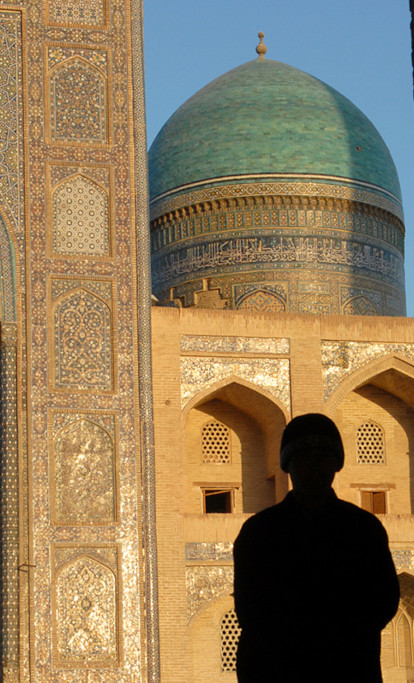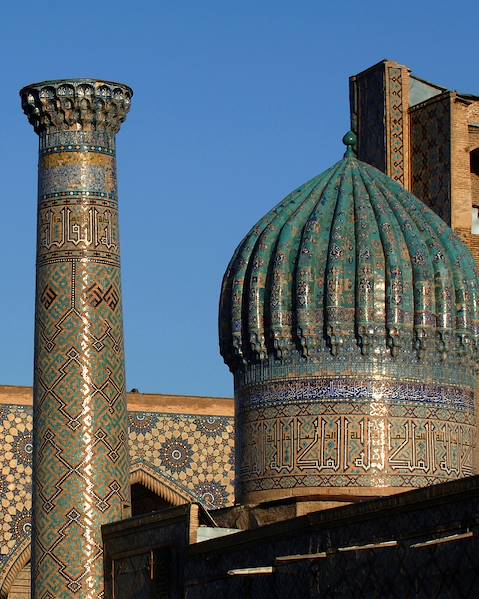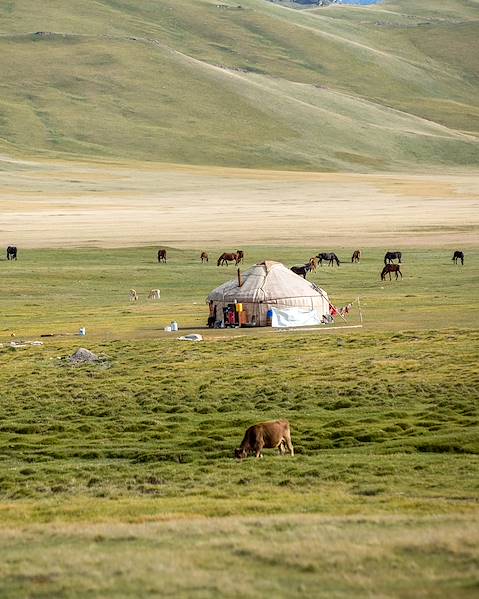Uzbekistan, like many of its Central Asian neighbours, has a continental-type climate. Winters are cold and very dry and summers are swelteringly hot, with a large variation in temperature between day and night. In other words, for nice weather the best time to go is in spring and autumn. Here's a more detailed look at the best time to visit Uzbekistan.
The coldest month of the year is January
January is one of the worst times to visit Uzbekistan, as the entire country is in the grip of freezing cold weather. In the capital, Tashkent, temperatures do not get above zero. With plenty of warm clothing, it's still possible to enjoy the beautiful sun that usually lights up the city at this time of year.
There's more to the place than meets the eye : this ancient staging post along the Silk Road is home to a few gems. Visit the Chorsu Bazaar, a treasure trove of products from all over the country, and climb its spiral staircase to take in the magnificent view of the mountains.
If visiting the Samarkand region, remember to pack a lot more layers . This region experiences heavy snowfall and it can be bitterly cold. But like Tashkent, the days are very bright.
The central areas also have fantastic sunshine and temperatures that often drop below zero; the same goes for the cities around the Amu Darya basin (Gazli, Uzunkuduk, Kochka...). But the latter see a little less sunshine.
For some warmth, head to the border towns in the south of the country, bordering Afghanistan. Temperatures are often above zero, even in the morning, and the sun often shines.
Note to hikers : the regions of Karakalpakstan and the mountainous areas of Tian Shan are very difficult to explore in January. Temperatures can drop to -40°C and the passes are often closed because they are impassable.
February : a slight increase in temperature
There is a noticeable slight thaw in February. The southern border towns are the first to feel the effect, with temperatures sometimes in the region of 10°C. The cities in the south and centre of the country also feel the benefit, with temperatures a few degrees above zero.
To warm up even more, visit Ternez, which has a microclimate because it lies in a hollow between the Kugitang Mountains and Mount Khabatag, located to the west and east of the city, respectively. This is the region's only cave Buddhist monastery .
In the Tashkent region, while mornings are still chilly, temperatures start to climb a little during the day. It's not time to ditch the warm clothes though .
The story is more mixed in Samarkand and the surrounding region because the sun and clouds frequently trade places, often accompanied by snowfall.
The cities surrounding the Amu Darya basin don't see snowfall and maintain a similar climate in January, with sunny days and very low temperatures.
March: the first signs of spring
The weather starts to picks up again in March Temperatures rise considerably in most parts of the country, and the sun starts to flex its muscles. Again, the towns along the southern border are the big winners.
This is then followed by central region and around the Amu Darya basin. Spring is on its way and it's ideal for exploring without worrying too much about the cold.
Temperatures in the Samarkand region also go up a few notches without winter relinquishing its grip. But there is a fair amount of sunshine though. When it does put in an appearance, be sure to visit the hill-fort settlement of Afrosyab, an ancient city dating back to the eight century BC. It has traces of successive civilisations, from the Iron Age to the Mongol Conquest.
April: peak season begins
There's no doubt about it, spring has sprung in April and with it come the visitors. It even starts to get hot in the southern border towns. The best bet at this time of year is to focus on the country's natural wonders rather than the cities. Aral-Paygambar island is a great excursion. It's a seven-acre nature reserve covered with green vegetation and off the tourist trail.
In Tashkent and the surrounding area, there are clear skies most of t
















